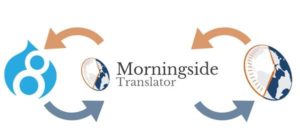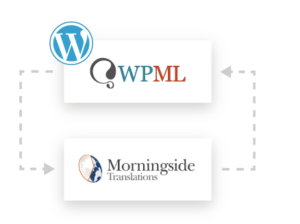Year: 2019
Can AI Own Itself?

Artificial intelligence (AI) has evolved from a software concept into an active presence in our lives. We use it to manage our power grids, analyze medical data and keep planes in the air (just to name a few examples). In general, AI solves problems by performing automated analyses of data based on programmer-supplied algorithms. Often it also incorporates machine learning, where the program trains itself to become “smarter.” No longer is AI just an attempt to replicate human intelligence — it can have a mind of its own — and it can be different.
In recent years, patent offices around the world have seen a surge of AI-related patent filings. These AI patent applications have challenged our existing standards for patent eligibility, and they raise an important question about intellectual property (IP): When machine learning takes AI beyond its human programmers’ contributions, can AI own itself? The answer to this question is tricky because it will have to encompass not only who has a right to profit from AI, but also who’s responsible for insufficient or even damaging outcomes.
A word from WIPO
Last year, World Intellectual Property Organization (WIPO) General Director Francis Gurry said, “The fundamental goals of the IP system have always been to encourage new technologies and creative works, and to create a sustainable economic basis for invention and creation. From a purely economic perspective, if we set aside other aims of the IP system, such as “just reward” and moral rights, there is no reason why we shouldn’t use IP to reward AI-generated inventions or creations.” However, Gurry admitted that “this still requires some thought” and that “the answers are not clear.”
The current thinking on AI ownership
U.S. courts have been clear that machines are not individuals and thus can not own property or be held liable. Indeed, the general worldwide consensus at the moment is that AI belongs to its human programmer or programmers. There have been numerous test cases to back up this consensus. Artworks, for example, “created” by AI so far rely predominantly on the continual tweaking of algorithms by humans to achieve the final result. In such cases, AI indeed seems to be merely a tool employed by a human.
Still, questions remain. For example, much of what AI does is analyze massive data sets. This raises the question of whether the owners of such data are entitled to IP rights for inventions that used their data. The Internet of Things poses another question along the same lines: Who owns a program whose functionality depends on interaction with other proprietary devices or programs? There is no simple answer, and it gets even more complicated.
AI often incorporates chunks of publicly donated open source code. Should mechanisms exist that allow the contributors of such code to participate in earnings? A case in point is an AI-created painting that recently sold for half a million dollars. It was based in part on open source code written and uploaded by programmer Robbie Barrat, who asked in a tweet, “Am I crazy for thinking that they really just used my network and are selling results?” Making things even more complex is that fact that open source code may contain contributions from many programmers — so even definitively identifying its authors can be difficult, much less compensating them.
AI’s “black box” problem
So far, we’ve been discussing AI in general, but AI that involves machine learning is a whole other story, and one in which AI self-ownership may be more sensibly justified. This type of program can evolve well beyond its human input, becoming a “black box” whose workings are often largely unknown even to its original human “creators.” This raises its own particular set of IP questions: Does a human even want to own the IP of AI for which the decision-making process is unknown? Who would be responsible for an AI program that malfunctions or causes damage? There’s an additional IP wrinkle here, too: Who is responsible for AI that teaches itself to infringe on someone else’s patent?
While machine learning has proven to be a productive tool, there’s no question that it’s a bit unnerving and potentially dangerous in general. Without knowing how a program is actually deriving its conclusions — even if they seem to be more or less sensible — programmers are rightfully uneasy. Hanna Wallach, senior researcher at Microsoft, tells Quartz, “As machine learning becomes more prevalent in society — and the stakes keep getting higher and higher — people are beginning to realize that we can’t treat these systems as infallible and impartial black boxes. We need to understand what’s going on inside them and how they are being used.”
A radical rethink of IP and AI may eventually be necessary
The black box nature of machine learning AI, the complications of cross-application functionality, the difficulty of assessing genuine ownership of an AI program — all of these leave us to believe that current IP frameworks fall short when it comes to AI ownership. At the same time, WIPO Director Gurry believes, “The IP system as we know it is certainly not going out of fashion. It is being used more than ever before. But new challenges are emerging and the result may be an additional layer of IP, rather than the replacement of the existing system.” Only time will tell.
Get the latest insights delivered to your inbox
How to Choose a Language Service Provider for FCPA Translations

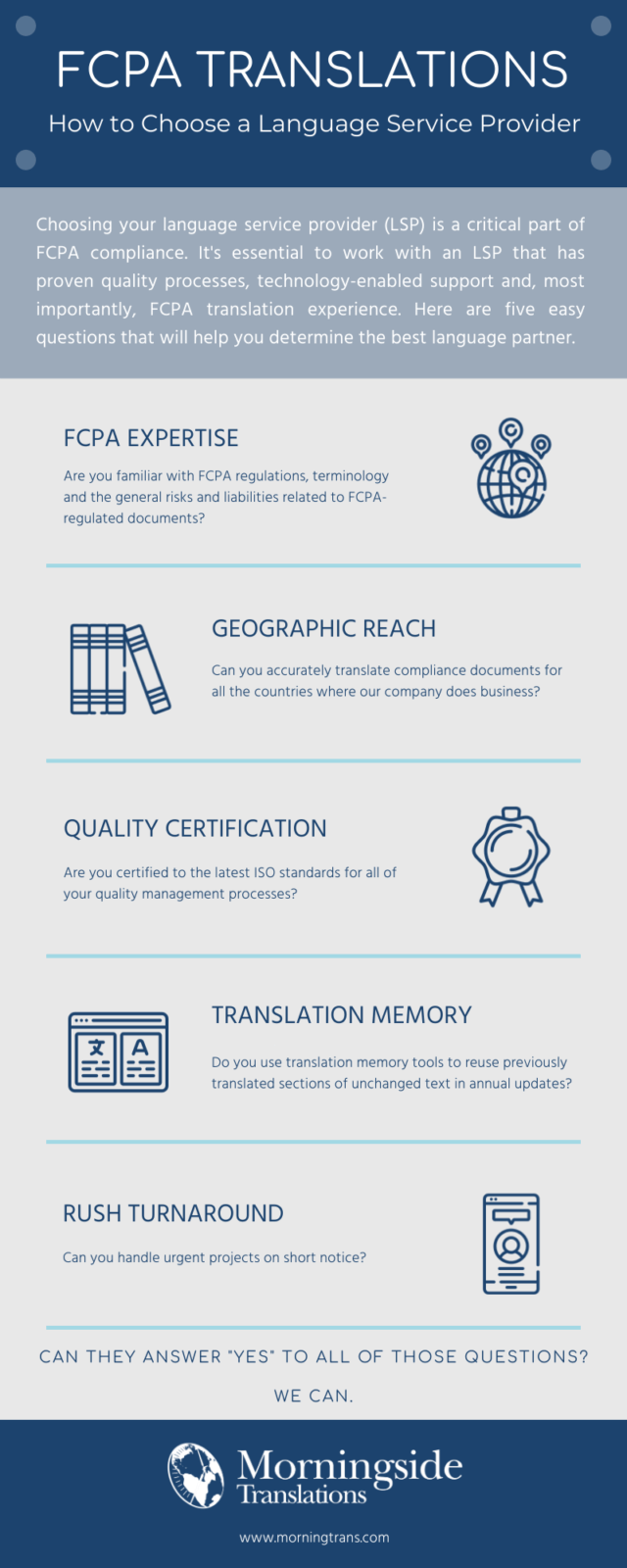
Get the latest insights delivered to your inbox
7 Things You Should Know about Professional Medical Translation Services

Many types of life sciences documentation require translation as outlined by each country’s governing medical agency.
Some content that may need to be translated includes clinical trial instructions, medical device IFUs (instructions for use), software that runs surgical equipment, medical textbooks and more.
If you’re responsible for procuring professional medical translation services in this unique and highly regulated industry, here are seven things you should know:
1. Absolute accuracy
Medical translations are a specialization, and they require high-quality work. There is zero tolerance for medical translation and editing errors—even an accidental numerical error on a pharmaceutical document could cause harm or death.
2. Subject matter expertise
Given the nature of the content, medical translations can’t be done by just anyone. Medical translations require translators, editors and proofreaders to be highly experienced subject matter experts in the specific medical field.
3. National translation requirements
The international medical industry is highly regulated, so be sure you work with a language services provider (LSP) specializing in medical translations. In most countries, clinical trial documentation and medical labels (on containers, packaging and inserts) must be translated. However, the requirements for translations in each country vary and are regulated by local agencies. For example, countries in the European Union follow the Medical Devices Directive 93/42/EEC, which defines translation requirements based on the type of content and user type, and also outlines requirements for countries with more than one official language. An LSP that specializes in medical translations will know what’s required in each country and can help you successfully navigate the requirements.
4. Proper documentation
Within the medical field, the pharmaceutical industry may be the most specialized. This industry requires detailed documentation of all processes and products, with regulatory requirements requiring translated content to advance between stages. Translators should come from the pharmaceutical industry with experience translating a range of pharmaceutical content & documentation.
5. Cost considerations
High-quality medical translations need to be performed and proofread by subject matter experts in the relevant medical field. Some translations must undergo the additional step of linguistic validation, depending on their use. Don’t compromise on quality by selecting the cheapest translator – when it comes to medical translation, quality has to be perfect.
6. Confidential information
Depending on the confidential nature of your content, you may need to ask your LSP to secure confidentiality agreements from the team members working on your project. An LSP should be able to accommodate this request.
7. Terminology management
Using correct, consistent terminology is a critical part of producing high-quality translations. If you don’t have one already, your LSP can help you develop a glossary of terms that will be used throughout your translation project/s. Establishing these terms before translations begin increases translation consistency while also saving time and money.
Get the latest insights delivered to your inbox
11 Things to Consider If You’re Filing in Japan

Surpassed only by China and the United States, Japan is one of the top 3 countries for patent applications worldwide. In 2018, the Japan Patent Office (JPO) received over 300,000 applications – yet only 19% of those applications were filed by non-residents. This imbalance emphasizes the challenges for international applicants looking to file in Japan, as they face high filing costs and potential challenges with patent translations. If you are new to patent filing in Japan, or if your organization files there frequently, here are 11 points you should keep in mind:
1. Language of application
For direct filing, the application can be filed in English, but the Japanese translation of the description, claims, drawings and abstract must be filed within 14 months from the priority date. For PCT national phase entry, the translation is due upon filing at the 30-month deadline, but a translation extension is available for up to two months from the filing date, without incurring additional fees.
2. Translation errors
Japan has the highest translation error rate and is the language most prone to inaccuracies in IP translation. Why is that? The writing system in Japan has four different alphabets, each of which are used for different purposes: Kanji, Hiragana, Katakana and Rōmaji. It’s absolutely critical that your patent is filed with the correct writing system. Any language errors or ambiguities could lead to costly office actions. Make sure to use an experienced patent translation company to ensure quality and accuracy.
3. First-to-file principle
Japanese law is based on the first-to file principle. This means that in Japan, IP rights are awarded to whoever files a patent first — regardless of the date of the actual invention. For this reason, it’s highly recommended to avoid talking to anyone about your idea without having them sign a non-disclosure agreement (NDA) first. Here is a sample patent NDA.
4. Searching for prior art
Foreign applicants can experience difficulties when searching for prior art in Japan as all previous patents are filed in Japanese. Machine translations of previous publications are available, though, in the Japan Platform for Patent Information database (J-PlatPat), free of charge.
5. Submitting a priority document
If you have already filed a priority document at the EPO or any of these patent offices, you do not need to submit the priority document again in Japan. That’s because of WIPO’s Digital Access Service (DAS), an electronic system that automates the secure transfer of priority documents between participating patent offices. The JPO became a participating member of DAS in April 2009.
6. Appointing a local representative
If an applicant does not reside or have a business address in Japan, they can still file a patent application at the JPO to establish the filing date. After that, however, there is a critical step to complete – the applicant must appoint a representative with a local address to conduct most subsequent procedures (there are a few exceptions). The representative is called a “Patent Administrator” and can be any patent attorney, attorney-at-law or firm registered to practice before the JPO.
7. Power of Attorney requirements
A power of attorney form is is not required for filing or for appointing a local representative. A POA may be required if the representative has to respond to a rejection, or if the granted patent is opposed. Note: If information on a representative is included in the application form, a power of attorney does not need to be submitted.
8. Submitting electronically
Applications can be submitted to the JPO in either paper form or electronically, though a substantial fee will be charged by the JPO for converting paper forms into electronic format. To lower costs, you should therefore submit electronically if possible.
9. Preparing the specification
The JPO is reasonably lenient on details in the specification. The specification must describe the invention in sufficient detail so that it can be completed by a person with skill in the relevant area/s. However, the JPO rarely allows new claims to be added, so it is important to include as much information in the specification as possible.
10. Additional fees for claims
The number of claims does not affect the initial filing fee, but each claim above the first increases examination and annuities fees. These fees have made Japan one of the more expensive countries in which to file your patents. To lower costs, you can reduce the number of claims after filing but before the request for examination.
11. Request for examination time frame
A request for examination must be made within three years of filing. If a request for examination is not filed within this time, the patent application will be considered withdrawn.
For information on how Morningside can help you lower translation & filing costs in Japan while ensuring quality, please contact us below.
Get the latest insights delivered to your inbox
How To Grow Your Business in Multiple Markets
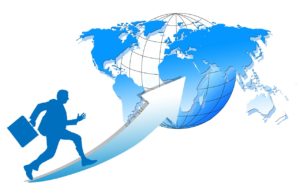
Few companies hit the ground running with a global marketing strategy in place. Usually the process of going international is incremental, a gradual entry into new markets and regions driven by overseas opportunities and new partnerships, rather than a strategic international marketing plan. But even without a formal plan, you can enjoy immediate benefits by translating your website and collateral into several key languages.
Focus on the languages of those countries where you currently do business or are trying to do business. The potential ROI from providing a more customized customer experience far outweighs the actual costs of localization, and this is where you come into the picture: by advocating the global localization of a company’s collateral, a marketing department can make a profound contribution to the bottom line. Here’s how to get started:
Website localization
The research into online buying behaviors tells a compelling story. A Common Sense Advisory survey of 3,000 consumers in 10 non-Anglophone countries found that 75% prefer to buy products in their native language and 60% rarely or never buy from English-language websites. In China alone, 95% of online business is conducted on Chinese-language websites, according to Forrester Research, yet the online presence of U.S. companies in China is almost entirely (99%) English-only. That’s just one example of a massive missed opportunity!
Pro Tip: If your business website is currently in English-only and you want to expand your business in non-Anglophone countries, at the very least you should translate your website into the local language of every country where you currently have customers. You can also go a step further by adapting your content (including colors and imagery) to appeal to local tastes and attitudes. This is called transcreation.
Multilingual SEO
To remain competitive, your company and products should be optimized for search engine exposure in each of the markets you serve. In China, for example, over 70% of the population uses a search engine called Baidu – while less than 2% use Google. In Russia, over half the population uses a search engine called Yandex. If you’re trying to expand into those or other countries, you need to make sure customers there can find you online, regardless of the language in which they search. This requires consistent and accurate keyword translations as part of a multilingual approach to search engine optimization (SEO).
Pro Tip: Proper keyword targeting is just as critical to achieving high search engine rankings overseas as it is in the United States!
Localized marketing collateral
Your message and brand can easily get lost in translation if your marketing and advertising collateral isn’t localized correctly. This can have a direct impact on your team’s bottom line. Working with an experienced language solutions provider (LSP) can help you accurately and skillfully communicate with your target markets and achieve strong results like:
- more effective email blasts to potential customers in different countries
- more persuasive sales presentations with localized slides, displays, banners, brochures, and scripts optimized for different audiences
- more lead generation through subtitled or dubbed video outreach
- increased impact from local-language print ads.
Pro Tip: We recommend staying in touch with customers via company newsletters that help generate excitement about your product and keep you on your customer’s radar. Whether you include product updates, company news or previews of what’s coming next, creating localized versions of these publications in your key markets is a great way to connect and show that you are focused and invested in that country/region.
Multilingual eLearning
If your product requires a demo, you should consider the added value of localized online eLearning modules. Localized training modules can help you to ensure your product is promoted in its best light by every sales rep every time.
Embrace the opportunity
Conquering foreign markets is a prodigious task, but you don’t need to make huge investments in time or money to achieve new opportunities and revenue right away. Translating and localizing your existing collateral is a relatively inexpensive way to reach new customers and, over time, the successful execution of a marketing localization strategy can position your company for dramatic growth in markets around the world. Consider the possibilities.
Get the latest insights delivered to your inbox
Technical Translations: 5 Tips to Reduce Translation Costs
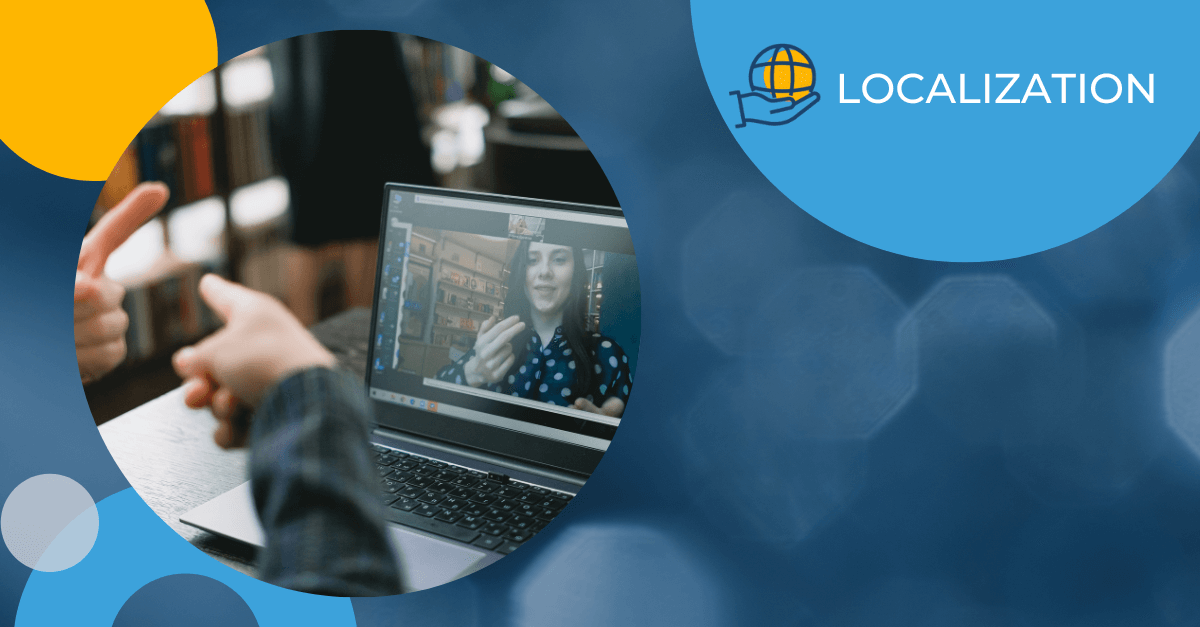
Translators are trained to work with the text and formatting they receive from clients. However, if that content is not optimized for the most efficient translation workflow, it can wind up costing the client time and money. That’s why it’s important for businesses to engage technical writers who understand as much as possible about the technical translation and localization process. A savvy technical writer can design content to be easily translatable, which will improve efficiency and cut costs during future translation projects. Here are five ways to make your technical documentation more effective:
1. Reuse content wherever possible
Most businesses have content that is used repeatedly, such as warnings or disclaimers. Identifying the content that appears in multiple places and standardizing it is an extremely beneficial exercise. Doing so will decrease the amount of time that it takes translators to work because they use specialized translation tools that can offer suggestions for previously translated content. If translators do not have to translate from scratch, the job will not only be completed faster — it will also contain content that is consistent across all different types of outputs (e.g. website copy, manuals and marketing literature). A Content Management System (CMS) is ideal for managing these reusable chunks of content.
2. Create a predefined glossary
Consistent terminology should be added to a glossary of terms, which can be used by translators in conjunction with their specialized translation tools. A glossary of terms is a living tool and it should be updated when you have new terms to add. Doing so will result in documentation that is not only more consistent (which provides a better customer experience), but also more accurate (because if different terms are used for the same thing, it can be very confusing in the translations).
3. Separate text from graphics
If text is embedded in graphics, the localization process can end up taking longer (and costing more) because the graphics will need to be recreated with localized text. If the translated text fills a different amount of physical page space, the whole graphic may need to be redesigned to account for that. That’s why, whenever it’s possible, it’s in your best interest to separate text from graphics. Doing so will mean that your project can be translated more quickly, saving time and lowering costs.
4. Avoid cultural references
It’s important when writing technical content in English to remember that not all end-users are native English speakers. Cultural references and idiomatic phrases are difficult and sometimes impossible to translate. They can cause misunderstandings and potentially even damage your brand. By avoiding these types of phrases in the first place, your end-users will have a better understanding of the content, and the translation process will be easier to accurately complete.
5. Make smart revisions
If you need to update previously translated content, you should do everything possible to minimize unnecessary changes to the text. It can be very tempting to want to change or tweak text here and there, but the more content you change, the more expensive and time consuming it will be to translate and localize the updates for all of your different audiences.
Seek an expert partner
At Morningside, we take pride in offering highly professional technical translation services to customers around the globe and we’re here to assist you along the way. It’s never too early to prepare and plan for localization. How a document is written and formatted will directly impact the amount of time and money it takes to translate it. To learn more about how to save time and money with localization services, contact us today.
Get the latest insights delivered to your inbox
How Translation Memory Can Improve Quality While Saving Time & Money

If you’re considering expanding your business into foreign language markets, a translation memory (TM) is one of the tools you can implement with your translation services company. A TM helps translators work more efficiently to reduce costs, increase consistency and reduce time to market. Here’s a closer look at all you need to know about TM.
What is Translation Memory?
A translation memory is a repository of original content and the translated versions of that content. For each new project, the translation services company inputs the new content into the TM, and the TM identifies repeated or similar content. Translators can then reuse previously translated content stored in the TM during future projects. As more content is translated, the TM continues to grow — so the more you put into the TM, the more you get out of it.
How Does a Translation Memory Work?
The TM compares existing content to the new content and identifies three types of segments:
Repetitions/100% match – This type of segment occurs when a new word segment matches exactly with another word segment in the TM. For example, let’s say that you previously translated this sentence: “To complete the installation, you need two AA batteries.” If this sentence exists in a new translation project, it would be identified as a repetition/100% match. The translator still needs to review the sentence for context and quality, but this type of segment takes the least time of the three to translate.
Fuzzy segment – This type of segment occurs when a word segment partially matches another word segment in the TM. Per the previous example, let’s say that your TM contains the following sentence: “To complete the installation, you need two AA batteries.” Now let’s say that your new translation project contains this sentence: “To complete the installation, two AA batteries are required.” In this case, the TM will recognize the sentence as a fuzzy match because the first part matches an existing segment exactly, but the second part is somewhat different. A fuzzy match takes the translator less time to work through than brand new content, but obviously it takes more time than a 100% match.
New segment – A new segment is one that either doesn’t match any existing segments or it matches a segment at less than 50%. A translator will have to translate this segment from scratch.
Note: A translator will see both the original content and the highlighted 100% match/fuzzy/new segments, and then decide whether to accept the translation that’s in the TM or modify it. Upon completion of any translation project, the TM will need to be updated so that it contains the latest information.
Benefits of a Translation Memory
A TM has three main benefits:
It Saves You Money – When repetitions/100% match and fuzzy segments are identified, they will have lower translation fees than new segments. If you’re working in an authoring environment where you have a content reuse strategy, you’ll probably have a lot of 100% match segments. If you don’t have a content reuse strategy, and/or if you have multiple writers, chances are that there will be a lot of fuzzy segments along with some 100% matches. In either case, a TM will make your translation projects more cost-effective due to its ability to recognize word segments.
It Improves Quality – Using a TM will increase consistency across different projects. It makes for a better customer experience when things are translated the same way across all documentation, websites and software applications. Even if more than one translator is working on a project, the suggestions from a TM can help translators remember which specific words to use. This can be especially handy if there are certain standard terms for your industry, product or service. If you work with your translation company to capture this terminology and get it translated before a project begins, you can incorporate it into your TM. A TM and a glossary of standard terms are two good tools to use together for the highest quality translations.
It Decreases Time to Market – A TM prepopulates new content with previously translated segments. A translator can then simply approve those segments and focus their energy on new content. You can really see the benefits of using a TM whenever content is repeated a lot, such as with technical documentation, or with larger projects such as website and software localization. With a TM in place, you can expect faster turnaround time and therefore decreased time to market.
Get the latest insights delivered to your inbox
5 Tips for Selecting a Medical Device Translation Company

Does the prospect of selecting a medical device translation company fill you with anxiety? The right company can do wonders for your brand, while the wrong translation company can cause major damage to both your reputation and bottom line. It’s an important decision to make and not one to be taken lightly. These five tips will help you select a translation company that can localize your medical device materials professionally, accurately and according to local laws and regulations.
1. Do Your Research
This cannot be emphasized enough. Only look for translation companies that offer medical translations as a specialty or as their core competency. Since this area is so specialized, you should only rely on experts who understand the complicated process. Medical translators must be subject matter experts, or even doctors, who know the regulations and certifications that are required in each country.
Check references to make sure that the vendor has plenty of subject matter expertise and that it has accumulated loyal customers over the years. Also, make sure the medical translation company you’ve chosen has a dedicated project manager who is responsive and available to you as needed.
Tip: If you’re new to medical translations, you’re going to need time to understand the process. It’s OK to ask for explanations and to expect a high level of responsiveness and customer service from your vendor.
2. Look for ISO Certifications
For medical devices and other medical translations, you should expect a translation company to have the following ISO certifications:
- ISO 9001:2015 – This is the international standard for quality control. It specifies general requirements for setting up a quality management system (QMS) that meets customer and regulatory requirements. This standard is intended for any organization of any size in any industry.
- ISO 17100:2015 – This standard is similar to ISO 9001, but it’s geared towards the specific processes required to deliver quality translation services.
- ISO 13485:2016 – This standard outlines specific quality management system requirements for companies providing medical devices and related services.
Tip: If a medical device manufacturer outsources its translations, the manufacturer will be held accountable for the work of the translation company. That’s why many medical device companies require translation vendors to obtain the ISO 13485 certification.
3. Gather Bids
When you’re researching a medical device translation vendor, it’s a good idea to seek a few different bids. This does not have to be a formal RFP process, but it’s important to make sure you are comparing apples to apples. For example, when speaking to different translation companies, make sure you provide clear and consistent project instructions and then ask for a full explanation of how the vendor will complete the required tasks, how long it will take to do so, and what the cost for services will be.
It’s especially important to understand the vendor’s quality management system. If a vendor only has one quality control step, ask why. At Morningside, our quality assurance process includes multiple rounds of editing and proofing with built-in redundancies to ensure accuracy, proper terminology and correct localization for the target audience.
4. Don’t Expect Cheap and Fast Translations
Have you heard of the project management triangle? It’s a concept that’s been around since the 1950s. In this model, there are three key elements – good, fast and cheap. Your project can be any two of these – but it’s impossible to achieve all three.
With medical device translations, the work must be good – there is simply no room for inaccuracy in this industry. If you cut corners to save money and time in the short term, you will pay for it later (products will be pulled from shelves and costly litigation can take place).
That leaves you with a choice to make about cost. If you want your project completed quickly, it’s not going to be cheap. Rush fees will be applied. However, you can save money (and avoid rush fees entirely) if you plan a project timeline with your vendor well in advance of your deadline.
5. Talk to Fellow Industry Professionals
Are you in touch with fellow medical device colleagues at other companies? Are you attending an industry trade show in the near future? Try asking fellow professionals which translation vendor they’re using and whether they’ve learned many helpful lessons along the way. It’s always better to learn from others than to experience issues first-hand.
Invitation to Connect
If you’d like more information about medical device translations, feel free to reach out to us today or request a complimentary quote. As a medical device translation company, we have all three ISO certifications and 20 years of industry experience.
Get the latest insights delivered to your inbox
How to Protect IP Rights when Outsourcing

Outsourcing is a well-established phenomenon in today’s global economy. Although initially associated with large, multinational companies, today outsourcing is growing among small-to-medium businesses as well. The key motivations for outsourcing include cutting costs, solving capacity issues and maintaining a clear focus on the core business. On the other hand, outsourcing raises a very critical question: How do I protect my intellectual property rights (IPR) – both for existing IP as well as any new IP that may be created? In this blog, we take a closer look at how to manage potential IPR risks without losing out on the benefits that outsourcing can bring to your company and bottom line.
Determine your IP strategy
Before jumping onto the outsourcing bandwagon, you should do an inventory of the IP that will likely be exposed. If you have third-party licensing agreements, make sure you are free to share the required IP with your outsourcing vendor. Where relevant, strengthen your IP portfolio by registering and filing patents, trademarks and copyrights – not only in your own country, but also in the countries where the outsourcing would take place.
You should also consider defining an initial outsourcing scope of work that does not expose your core IP. After you have established a good working relationship with an outsourcing vendor, you can extend the scope with greater confidence that your business-critical patents will be safe.
Make IP part of your due diligence
Finding the right outsourcing vendor is a long and arduous process. Be sure to make IP an important part of your due diligence, at several levels.
Start with the target countries themselves. Respect for IP rights varies from country to country and you should consider avoiding outsourcing to countries where IP laws are weak or poorly enforced. Two websites where you can gather relevant information are the International IP Index and Country IPR Toolkits, both of which are maintained by the US Chamber of Commerce.
Regarding the vendors, you should ensure that they have well-established procedures and a security infrastructure for protecting sensitive data. Make sure that they do thorough background checks on their employees and properly train them on IPR. While checking out their references, explore their track record of respecting and protecting intellectual property. Verify that they have insurance that will cover them for any damage you may suffer if your IP (including your trade secrets) are compromised.
Key IP issues for outsourcing agreements
When it comes to drafting the outsourcing agreement, there are a number of IP-related issues that should receive special attention. For example, the agreement should contain comprehensive, enforceable non-disclosure and non-compete sections. These issues are particularly important when your IP includes trade secrets.
The ownership of IP is also a critical issue. Not only should the ownership of existing IP be crystal-clear, but it should also be clear who owns any new IP that may be created during the outsourcing. Newly created IP is typically defined as “works for hire” that belong to the company paying for the work. But it is not unusual for outsourcing agreements to include options for mutual licensing of new IP. That’s all well and good, as long as it is clearly spelled out and understood the same way by both parties.
Tip: Organize and file every contract and agreement related to IP for easy future reference, just in case IP conflicts arise.
Establish clear communications
Poor communication is the #1 reason for the failure of an outsourcing project. Language barriers and cross-cultural misunderstandings can undermine the development of trust that is essential for a fruitful working relationship in general and for the protection of IPR in particular. All efforts invested in establishing strong communications in a multilingual, multi-cultural working relationship will go a long way to ensure successful outcomes.
Get the latest insights delivered to your inbox
Website Translation: How Do We Manage Regular Updates in 20 Languages?
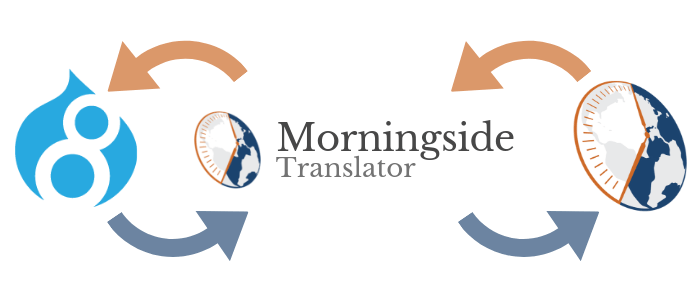
If you manage or operate a website, chances are high that it’s powered by WordPress or Drupal, two of the most popular content management systems (CMS) in use today. These two back-end frameworks power over 76 million websites worldwide, ranging from personal blogs and self-hosted retail pages to corporate, political and government websites. If you want to make your WordPress or Drupal-hosted content available to more people, one of the most effective ways to do that is to make your website multilingual.
Traditionally, however, the process of website translation has been very complicated, involving three time-consuming steps: (1) Manually download all the source text you wish to translate from your CMS. (2) Email the source text files to your language service provider (LSP) to translate. (3) Upon completion of translations, manually upload or copy/paste the translated content back into to your CMS. This manual system is antiquated.
Instead, you should consider using an automated translation plugin that makes the website translation process a lot easier to complete. Morningside Translator for Drupal and WordPress Multilingual (WPML) both work to build a bridge between your website’s source language content and Morningside’s network of 8,000+ native linguists and subject matter experts. Both plugins allow you to monitor the status of projects, submit & approve quotes, and review & publish translated content — all within the plugin dashboards. Let’s take a closer look at these two different options.
Drupal: Morningside Translator
Morningside Translator is a proprietary Drupal translation plugin for the Translation Management (TMGMT) module within Drupal 7 and Drupal 8. It enables you to seamlessly connect with Morningside to translate and publish multilingual content for your website without ever having to leave your Drupal CMS. This removes two critical steps in the traditional process – with this plugin, you no longer need to download or upload content to/from your CMS, making it easier than ever to manage your Drupal website translations. Once you’ve installed and configured the plugin for TMGMT, you can:
- Provide project details
- Request a quote
- Select a single page or multiple pages for translation
- Choose from over 150 languages
- Enter a project due date
- Approve translation quotes
- Monitor the status of each project
WordPress: WPML Plugin
The WordPress translation plugin is a translation tool for businesses that use WordPress as their CMS. Although WordPress is a great platform for managing website content, the process of translating and updating multilingual content can be extremely cumbersome and time consuming without a little additional help. That’s where Morningside and WPML come in.
Similar to Morningside Translator, with WPML you can create multilingual versions of your original website, and you can use a dashboard to manage your projects. It’s simple – you don’t need to create a new WordPress site for each language; you’re just duplicating and translating each page.
So how does it work? First, you’ll need to download the WPML plugin for Morningside Translations. Then please contact your Morningside sales representative to configure your account for the WPML plugin. If you don’t have a Morningside rep, simply contact us via our website and one will be provided to you. Once configuration is complete, you will be able to submit and approve quotes and monitor your projects from within the WPML dashboard. When translated webpages are ready, you can review the completed translations within WordPress or simply publish them.
Advantages of Using a Translation Plugin
Both Morningside translation plugins provide many advantages over the traditional website translation process, such as:
- Dashboard – You get to manage the quoting process through a dashboard, which means no more copying and pasting or uploading content to some other directory. Instead, you simply select the webpages that you want to have translated from within WordPress or Drupal, designate the target language(s) required and the plugin will efficiently package the translation files and send them to Morningside for analysis and translation.
- Project manager – When you use a Morningside plugin, we provide you with a professional, highly responsive project manager to act as your single point of contact. Your PM will manage the translation process, including overseeing any necessary collaboration between the translator, proofreader and in-country reviewers (ICR).
- Search engine optimization (SEO) – Morningside can create customized translation packages for SEO content, such as meta tags, h1, titles, and transcreation of keywords.
As a result of all the automation, minimal effort is required to manage the translation process when using a translation plugin. At their core, Morningside Translator and the WPML plugin for Morningside Translations simply make it easier for you to manage multilingual websites powered by Drupal and WordPress. If you’d like to learn more about either option, contact us here.


